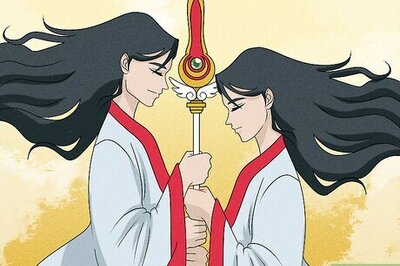
views
KOCHI: In the 17th century, when the Dutch came to Cochin for trade purposes, and eventually became its rulers, an interesting episode took place. The then Dutch governor Hendrik van Reede undertook an unexpected and novel project. Probably impressed with the lush verdure around, he grew interested in medicinal plants and collaborated with the local Keralite doctors, botanists, translators and artists to bring out a book on the findings. People were sent far and wide across the state to gather plants. Local doctors would then assess their medicinal properties, after which drawings would be made in water colours. The King of Cochin also helped him in this endevour. It was between 1678-1693 that this 12-volume work, illustrating as many as 700 indigenous plants, was published in Amsterdam.This is undoubtedly a fascinating piece of archival history. And it is not surprising that 350 years later it should have caught the attention of visual artist Renee Ridgway, a keen student of history. Though a proud American in every sense, Renee was always interested in Dutch colonial history “I grew up in a Dutch colony in the US. Also, it also has something to do with my mixed ancestry,” she says, as we sit for a chat at David Hall on a hot, sweltering day. She went to Netherlands for her studies, which further helped her understand the Dutch culture and history some more. Some time later Renee was battling with her migraines and sinus problem. No treatment seemed to be working. This is when someone suggested an ayurvedic doctor, Kochi-based Thomas Punnen to her, who was then in Netherlands. She was cured, and this instilled in her tremendous faith about the line of treatment. This reference somehow got her acquainted with Hortus Malabaricus, ‘the book’ that was compiled in the 17th century.Her passion for history, her faith in traditional Indian medicine, and love for nature (“I worked in a flower shop in Netherlands”)all came together, and Renee decided to get to the heart of the matter. “I had come to India before, but never to Kochi. I knew there was a Dutch settlement here, and it was while I was staying at the Kashi Art Residency in 2007, that I became determined to find more about it. David Hall, that has now become a hub for art and food events, was in ruins then, she says. Ironically, this Dutch heritage building is where the entire project was undertaken, says Renee. “There’s good evidence that the project was done at David Hall. Where else could it have been?” she says. And now this is the venue for the unveiling of Renee’s own project on Hortus Malabaricus that she along with her filmmaker-friend Rick van Amersfoort undertook.The launch of the book, and an extensive discussion will be held between Feb 15-22 and the event aims to focus on the cultural exchange that has occurred over the past 350 years on the Mallabar Coast between the Dutch and the local population. The book was more recently translated in English, and is now more accessible to people. “The stunning thing is that the contents of the book have been in circulation one way or the other, " she says.















Comments
0 comment